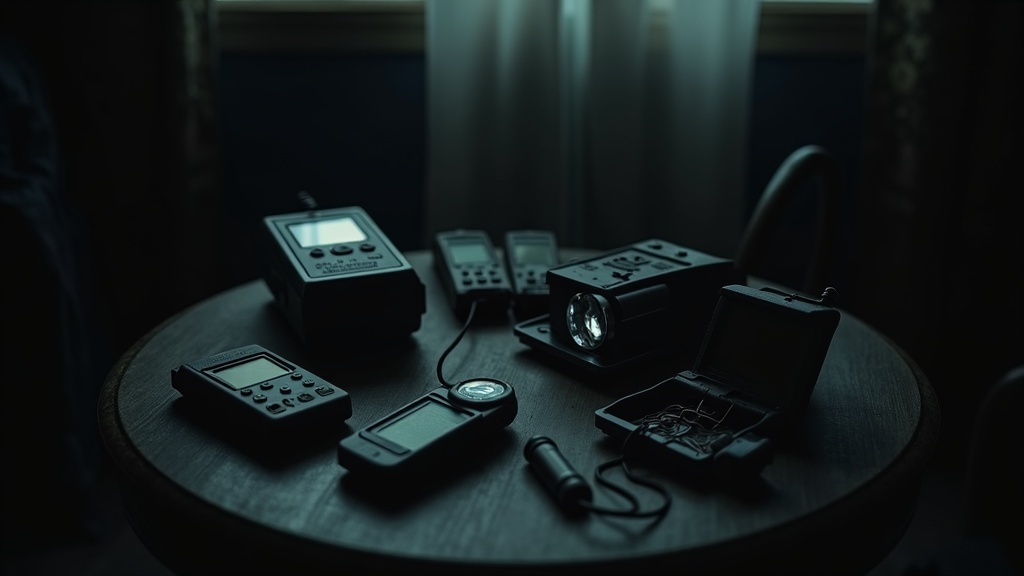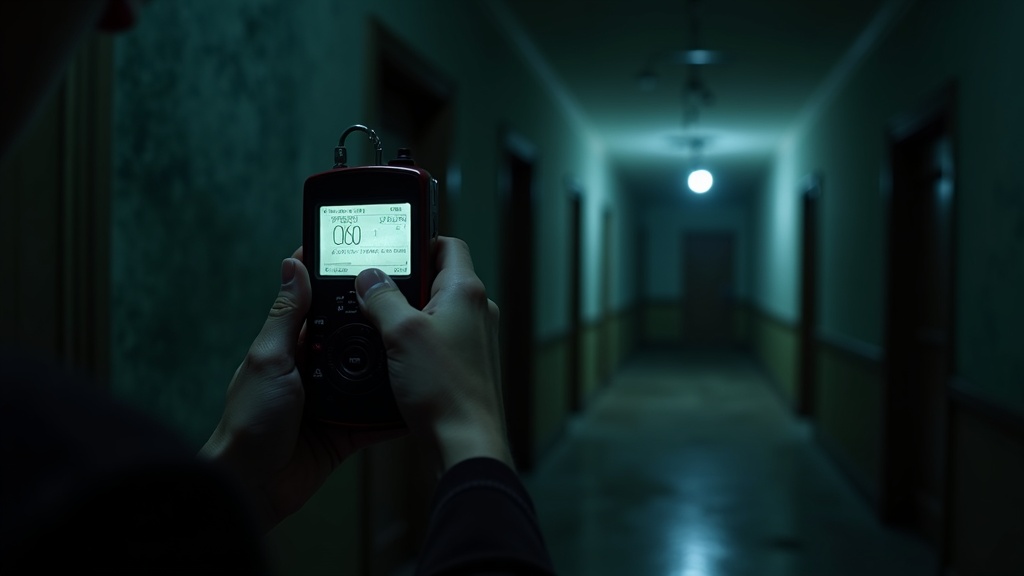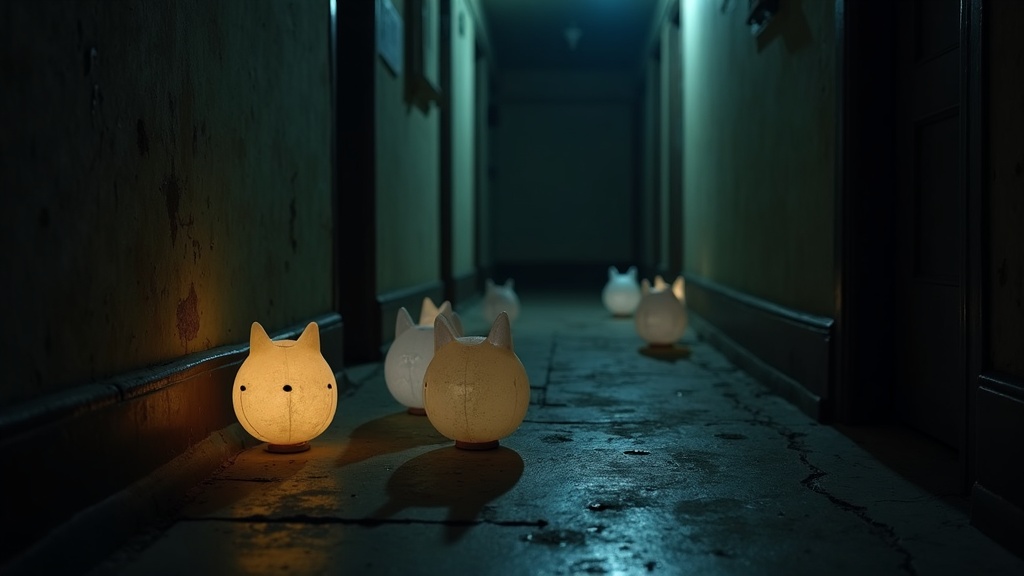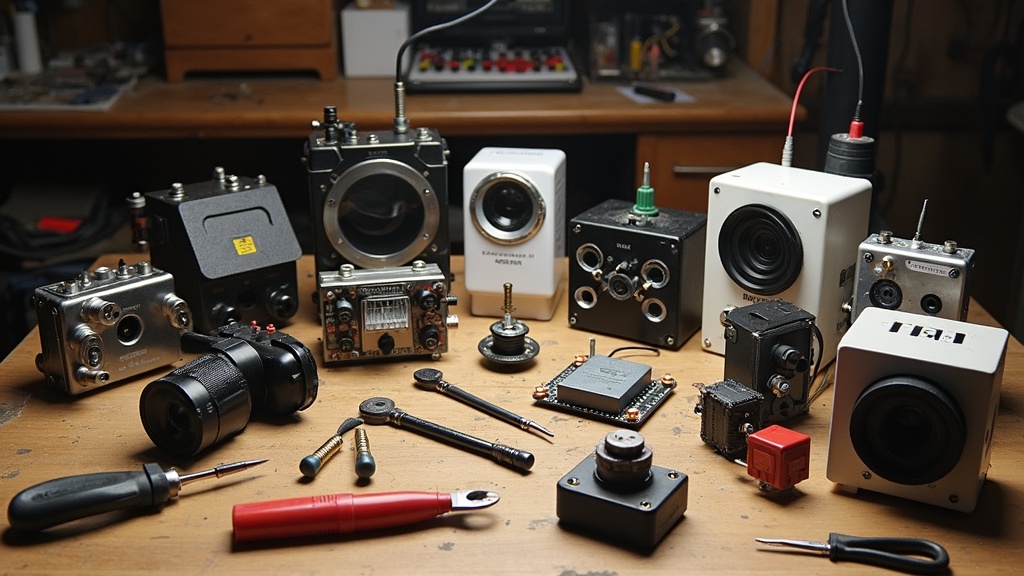If you’re thinking about stepping into the world of paranormal investigation, you’ll quickly realize there’s a surprising amount of gear out there. I’ve spent quite a bit of time in haunted locations with seasoned investigators and tinkerers, and I’ve watched the gadgets multiply every year. A good paranormal equipment list helps anyone—from curious beginners to pros—sort through what’s actually useful, what’s hype, and what might just spark your first unexplained experience.
So, here’s an all-in-one guide to paranormal gear, built on real experience, plenty of testing, and way too many late-night debates over what works best. You’ll find gear ratings, what you need for each type of investigation, and a bit of backstory to help you understand the tools of the trade.

Paranormal Equipment: Starter Picks
EMF Meter: Ghost Meter Pro
Thermal Imager: FLIR One Pro
Audio Recorder: Zoom H1n
Spirit Box: SB7 Spirit Box
Infrared Camera: Sony FDR-AX53 with IR conversion
Motion Sensor: Simple PIR
Temperature Gun: Etekcity Lasergrip 800
Trigger Objects: LED cat balls, maglite flashlight
Best App for Phone: Ghost Hunting Tools
Kit Rating: 4.9/5
Beginner Friendly: 5/5
Advanced Compatibility: 4.5/5
Reliability: 5/5
Free Resource: YES. Jump to the Complete Equipment List Here!
What sets a strong paranormal tool kit apart is that each piece actually lets you document, check, or debunk odd experiences. While Hollywood might suggest you need a tricked out van and $10,000 in tech, I’ve found you can get legitimate results, especially at the start, with a solid handful of practical items.
Whether you’re a DIY fan piecing together basic gear or ready to splurge on pro cameras and sensors, you’ll track down everything you need to know right here.
The Origins: How Paranormal Gear Evolved
The wide array of ghost hunting tools you see today grew out of a blend of curiosity, necessity, and a pinch of engineering creativity. I know a few investigators who got their start simply using old cassette recorders and cheap compasses, because that’s what was available. Early work wasn’t glamorous, but it taught the community why consistency, documentation, and skepticism matter.
Fast forward to now, and you’ll spot purpose-built meters, highres cameras, and even special phone apps that analyze audio or measure magnetic fields. Technology has definitely upped the game. But I also like to remember that gear helps tell the story. You, the investigator, still do the thinking.
On a personal note, I began by borrowing thermal tools, but quickly discovered that each environment calls for a slightly different set of gadgets. Watching creative teams build their own devices really brings home the point that you don’t need pricey equipment to start catching interesting evidence or debunking supposedly haunted hotspots. Over time, you identify what works best by swapping notes with others, trying out tools, and doing plenty of field testing. It’s a constant process of learning and experimenting.
Essential Paranormal Equipment For All Skill Levels

Some equipment pops up on pretty much every investigation. Here’s what I keep close in my own bag, and what I see most active groups relying on.
- EMF Meter: If you only bring one gadget, make it a reliable electromagnetic field meter. Spirits supposedly cause localized spikes in EMF. It’s also a handy debunker for sketchy wiring or electrical leaks causing false scares.
- Digital (or Analog) Audio Recorder: Good recorders capture unexplained voices and sounds. These are a favorite for collecting EVPs (Electronic Voice Phenomena).
- Infrared or Full Spectrum Camera: These let you capture what’s missed by your eyes, including fast moving shapes or cold spots visible under certain light wavelengths.
- Flashlight (plus headlamp): Never forget your flashlight. Rooms, basements, and attics become pitch black after dark. Bonus points for redlight flashlights that won’t blow your night vision.
- Notebook or Investigation App: Old school, but documenting location, weather, feelings, and time stamps is really useful, especially when you want to review evidence later.
With just those items, you can get busy in almost any location. Building your kit over time and adding gear as you learn what works for you is honestly the way most people make progress. You don’t have to buy everything at once.
Advanced Gear: Stepping Up Your Evidence Game
Once you’ve been out on a few investigations and want to level up, there are some upgrades and specialized tools worth digging into.
- Thermal Imaging Camera: Lets you spot odd temperature shifts in absolute darkness. These can reveal shapes and cold spots invisible to the naked eye. They’re pricey but are getting more popular and easier to use.
- Full Spectrum or Night Vision Camcorders: Allow you to document events, recording in total darkness is possible with full spectrum or IRconverted cameras.
- Motion Sensors: Super simple PIR sensors that alert you to movement in a room, hallway, or along walkways. Some connect to cameras or alarms, which is good for remote setups.
- REM-Pod: This little antenna gadget flashes and beeps when something (with a charge or possibly a spirit) gets too close. Everyone can see activity during sessions.
- Spirit Box or Ghost Box: Scans through radio frequencies at high speed. These tools let you listen for snippets of voices or words that pop in unexpectedly during questions.
- Vibration Sensors and Pressure Mats: Sensitive mats or sensors pick up footsteps, bumps, or sudden movements in lockeddown locations.
When you combine these tools, you can match up responses. If your EMF meter spikes while the Spirit Box says something and your camera’s running, those moments let you tie responses together and give a boost to evidence that stands out from random chance.
Apps, Software, and Digital Tools: Portable Tech for Ghost Hunters
Smartphones have shaken up the ghost hunting scene in a big way. Dozens of apps log environmental readings, record high quality audio, and even simulate Spirit Box features. Some use your phone’s sensors to act as EMF detectors or digital thermometers. I’ve personally used:
- Ghost Hunting Tools (iOS/Android): Records EVP sessions and picks up EMF spikes using your phone’s built-in sensors.
- Paranormal Recorder: Has noise-activated recording, so you skip hours of silence on your phone memory.
- Thermal Camera Apps (with FLIR/Vue): Not cheap, but portable and quick for impromptu investigations.
- Note-taking apps like Evernote: Logging locations is easier when you can stash pictures and audio in one place.
While dedicated devices are best for EMF and thermal readings, these apps are perfect for quick tests at home, collecting basic evidence, or reviewing notes on the go.
Main Categories of Paranormal Investigation Devices
The more you get into the hobby, the more you’ll start to spot the main categories of gear. Here’s how I sort them:
- Audio Recorders: For both analog (cassettes) and digital (high quality, easy review) EVP sessions.
- Video Cameras: Ranging from standard video to infrared (night vision) and full spectrum mods. Sometimes, body cams offer first person recording.
- EMF and Magnetic Field Detectors: KII meters, TriField meters, Mel meters (which also read temperature), plus DIY models for specific detection.
- Temperature Sensing: IR temperature guns, thermal cameras, and dataloggers to track ongoing changes over several hours.
- Trigger Objects: Such as LED cat balls, maglite flashlights, music boxes, dolls, and toy cars built to move or light up if touched.
- Spirit Communication: Spirit boxes, ouija boards (used with extreme care), pendulums, and dowsing rods—though the last three are controversial.
- Environmental Sensors: Geiger counters, humidity meters, air ionizers, and even barometric pressure app logs.
You don’t need them all. I pick a few for each site and mix approaches based on what’s reported at the location.
The Ultimate Paranormal Equipment List (with Ratings)

- EMF Meter (KII, Mel, TriField): Reliability 5/5 | Accessibility 5/5 | Usefulness 5/5. Always in my bag—nearly every team brings one. KII is affordable and steady.
- Audio Recorder (Zoom, Sony, Olympus): Reliability 5/5 | Accessibility 4.5/5 | Usefulness 5/5. Essential for catching EVPs. Microphone quality makes all the difference.
- IR / Full Spectrum Camera: Reliability 4/5 | Accessibility 3.5/5 | Usefulness 4.5/5. Great for video evidence. Some haunted venues need these for safety, too.
- Spirit Box (SB7, SB11, Portal Hack): Reliability 3/5 | Accessibility 4/5 | Usefulness 3.5/5. Can deliver standout sessions, but challenging to review objectively.
- REM-Pod: Reliability 4/5 | Accessibility 3.5/5 | Usefulness 3.5/5. Easy to use and eye catching, especially for groups or demonstrations.
- Motion/PIR Sensors: Reliability 4.5/5 | Accessibility 4/5 | Usefulness 4/5. Handy for covering empty spaces or long hallways.
- Temperature Gun / Logger: Reliability 4/5 | Accessibility 5/5 | Usefulness 4/5. Tracks cold spots or spots possible drafts creating “ghostly” chills.
- Thermal Imager (FLIR): Reliability 4/5 | Accessibility 2.5/5 | Usefulness 4/5. High cost, but allows you to find invisible patterns.
- Cat Ball Trigger Objects: Reliability 4.5/5 | Accessibility 5/5 | Usefulness 4/5. Cheap, super visible, and everyone loves when they light up.
- Flashlight: Reliability 5/5 | Accessibility 5/5 | Usefulness 5/5. Absolutely vital for both exploring and capturing evidence.
- Notebook/Log Book: Reliability 5/5 | Accessibility 5/5 | Usefulness 4.5/5. Keeps your findings organized for later review.
The more user-friendly and easy to set up, the more likely you are to capture or debunk something, or at least rule out environmental causes.
Tips for Choosing the Right Gear for Your Investigation Style
- Consider the location: Large, abandoned buildings need more sensors, walkie talkies, and fixed cameras. Small homes often just require the essentials and maybe a few extra cameras for hotspots.
- Blend traditional and digital gear: Sometimes an old Polaroid or analog tape grabs something that digital sensors might miss. Feel free to bring a little of both worlds together.
- Focus on reliability and battery life: Go for gear that lasts all night—especially when you’re in a rural area with no outlets.
- Practice with your tools ahead of time: Don’t let your first EVP session be filled with confusion over buttons or settings.
- Start simple and expand: Most investigators build up their kit slowly. No rush. As you learn, you’ll pick what’s most helpful.
How Seasoned Investigators Use Their Equipment

I’ve found while exploring old hospitals, houses, and even haunted hotels, most pros don’t just power on everything and hope for the best. They focus on the right tools for the environment, documenting as much as possible using their senses, notebooks, and recordings.
It’s not about having eye catching lights; it’s about tracking patterns. If your EMF meter spikes happen at the same time as strange noises on your audio recorder, make careful notes and compare time stamps. It’s these connections that make data interesting, not just lots of gadgets flashing in the dark.
- Burst EVP sessions (fire off questions, then listen in silence)
- Baseline EMF readings before starting, to note regular environmental conditions
- Static night vision cameras set up for long runs while you check other rooms
- Regular, precise time-stamps and notes so you can match odd events across your devices later
Larger teams also use walkie talkies or headsets for coordination—everyone stays in the loop if something eye catching happens, but can also spread out for more coverage.
Debunking: Using Equipment to Test Claims and Find Natural Explanations
Your kit is just as useful for ruling out claims as for catching possible evidence. Most experiences turn out to have explainable causes, and tools let you check theories right on the spot.
Investigators often try to recreate “activity” by shaking doors, checking for sources of drafts, scanning walls for bad wiring, and even swapping out batteries to compare outcomes. When you can match odd claims to natural sources, you help everyone keep an open mind and make it easy to present logical findings to property owners.
Popular Paranormal Equipment Brands and Where to Find Them
- KII: Probably the top EMF meter sold for ghost hunting. Sets up fast and is affordable.
- Zoom Audio Recorders: Well known for clarity and battery performance. Popular models: H1n and H4n.
- SB7 / SB11 Spirit Box: Leading standards for live spirit communication sessions.
- FLIR Thermal Cameras: Used by nearly every major investigative group to spot temperature weirdness.
- REM-Pod by DAS: Straightforward to use, highly visible, ideal for demonstrations in dark spaces.
You’ll easily track these down at specialty paranormal shops, major online retailers, or electronics hobby stores. If you’re handy, consider building your own versions—there’s a thriving DIY scene. Many groups upgrade security cameras for infrared or cobble together cat ball triggers with simple electronics.
Building a Team and Investigative Workflow Using Your Equipment
- Pre-Investigation Discussion: Go over the plan, charge all batteries, and assign roles. Clear plans make the night smoother and avoid confusion.
- Baseline Readings Round: Take time to document normal readings throughout your environment. This gives you a solid point of reference for later spikes or activity.
- Active Sessions: Assign people to questioning and someone else to tech duties. This division of labor makes fixing issues easier if something doesn’t work right in the field.
- Consistent Logging: Note down times, places, and meter spikes every 10–20 minutes. These logs become immensely helpful for sifting through hours of data.
- Equipment Check Before Leaving: Collect all pieces of gear; double check nothing walks away in the darkness.
A good plan not only boosts your odds of catching evidence—it also simplifies the review process and helps everyone get more out of each session.
Common Pitfalls and Gear Mistakes in Paranormal Investigating
Everyone runs into gear slip ups. Here are classic mistakes to avoid:
- Never rely on a single set of batteries. Pack backups. Devices drain quickly, especially in cold or damp places.
- Counting on just your phone. Real audio recorders and cameras are much less likely to fail or fill up unexpectedly.
- Leaving valuable tools unsupervised in precarious spots, risking water damage or accidental loss.
- Forgetting the essentials: notepads, backup flashlights, and spare SD cards. Don’t overlook simple tools—they can make or break your investigation.
Upgrading and Maintaining Your Equipment

A little maintenance goes a long way. Routinely cleaning lenses and sensors, swapping out batteries, and tightening loose wires prevents most issues. I recommend setting aside time weekly to test your gear, even if no investigation is imminent.
Plenty of investigators resell gently used items through forums, allowing you to recoup costs and try higher end models as your kit grows. Investing in sturdy carrying cases and waterproof storage will pay off if your adventures include old buildings or outdoor explorations where elements are unpredictable.
Budget Gear vs. Pro Level Equipment: What Makes the Difference?
You might wonder if a $20 EMF meter performs all that differently from a $200 Mel meter. The main differences typically involve extra features rather than core sensitivity—datlogging, temperature readouts, and build quality. With cameras and recorders, paying more generally brings clearer audio/video, longer battery life, and extra functions.
When funds are tight, starter kits bundle basics like EMF meters, recorders, and flashlights for a reasonable price. You get a sturdy foundation and can add bigger investments later as your investigations challenge you to branch out.
Safety and Responsible Investigating
This can’t be overstated—gear is only half the challenge. Prioritize safety at every turn:
- Scan locations for hazards—watch out for open floors, asbestos notices, weak stairs, or critter infestations.
- Respect property rights. Always get permission before entering, and stick to allowed zones only.
- Tag team challenging setups, such as night vision installations or running wires, to prevent solo mishaps.
- Carry a basic first aid kit and multi purpose tape—handy for fixing both injuries and loose equipment!
Troubleshooting and Learning From False Positives
Almost every investigator has a story about getting excited over gear only to find the cause is phone interference, stray power sources, or a walkie talkie too close. Consistent baseline tests and using multiple types of equipment together help spot these accidental triggers quickly.
Tracking mistakes is smart. Make note of strange readings and the outcome. You might save yourself (or another investigator) future headaches and improve your skeptical approach to puzzling data. Your team, and any clients, will appreciate your transparency.
Why the Community Matters (and Where to Learn More)
There’s no replacement for the advice and support of other investigators, whether online or face to face. Forums, Facebook groups, and local meetups make sharing discoveries and tips both lively and rewarding. You’ll come across everything from custom software for analyzing audio, to homemade EMF meters, to group discounts on specialized gear.
Check these favorites for deeper dives:
- Prairie Ghosts for in-depth field advice
- GhostStop for trusted retail options
- TAPS for practical case studies and active community discussions
Most cities also offer ghost, history, or legend tours where you can get in touch with experienced investigators, see their gear in action, and hear the kinds of stories—solved and unsolved—that fuel the field. Don’t hesitate to reach out and join in.
Paranormal Equipment Price Ranges and Kits—What to Expect

Building your kit doesn’t require breaking the bank. Here’s what you can expect for budget planning (all figures USD, based on both major retailer and shop prices):
- Starter Kits (EMF, Audio, Flashlight): $60 to $120
- EMF Meters (standalone): $20 to $180
- Digital Recorders: $35 to $300
- Spirit Boxes (SB7/SB11): $90 to $140
- IR or Full Spectrum Cameras (modded): $100 to $500
- PIR Motion Sensors: $15 to $50
- Thermal Imagers: $350 to $2,000
- REM-Pod: $90 to $120
- Trigger Objects: $8 to $40
Many solo hunters spend between $200 and $400 for a rounded beginner kit, while teams often pool resources to purchase upper tier cameras, recorders, and TV-quality sensors.
Final Thoughts: Building Confidence, Evidence, and Enjoyment
A strong paranormal equipment list can help curiosity grow into real documentation and let stories become solid investigations. Even a basic kit lets you start making discoveries, sorting out weird claims, and building a foundation of evidence. The most rewarding part isn’t just catching the odd unexplainable blip—it’s working with your gear, refining your approach, and connecting with a larger world of curious minds.
Every item on this list was chosen for its usefulness in real world hunts—whether by catching something weird or simply making long, dark, chilly nights manageable. As your kit and skills grow, so will your confidence and perhaps your collection of memorable tales and insights.
Have advice, odd experiences, or gear struggles to share? Drop your thoughts below and let’s swap recommendations. Whether you’re new, seasoned, or just curious, the adventure gets better the more we share and learn together.
If you have any questions or comments, please leave them down below and I would be happy to help out.
